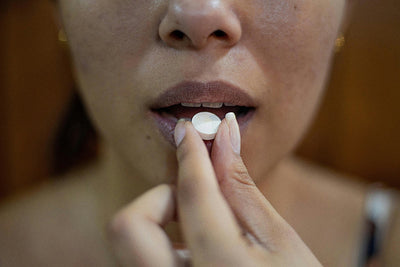THE MAKEUP OF YOUR MILK MATTERS
THE MAKEUP OF YOUR MILK MATTERS
BY JORDAN BERNS
At Lactation Lab, we believe that loving yourself means using personalized data to make your life easier. We believe that every mom deserves access to information on how basic lifestyle changes can improve the quality of her breast milk and optimize her child’s health and nutrition. This possibility is at our fingertips. We have helped over 3000 moms improve the quality of their milk and give them the peace of mind and support they need to navigate their own breastfeeding journey. With all the uncertainties there are during motherhood, we strive to eliminate the guesswork for this one.
Lactation Lab, EmBeba, and NAPS are collaborating this month on a campaign all about loving yourself as a new mom. All of these brands are founded by MOMS AND WOMEN. They all have first hand experience with the challenges of postpartum. They’ve all become stuck because of the lack of resources available for moms and set out to close the gaps. Together with our amazing partners, let’s discuss how to take care of your mental and physical health and nutrition. Visit their websites to see what they have to offer.

Alchemists might have tried to turn lead into gold, but if alchemists were really smart, they would turn lead into milk! But what is in this life-giving elixir specifically? Milk is a mixture of water, proteins, fat, lactose, and minerals. Breast milk in particular is made of Calcium, Phosphorous, Magnesium, Potassium, Sodium, and Chloride, but it gets even more complex the closer you look at it.
HERE’S THE SKINNY: FATS ARE YOUR FRIEND!
The star of breast milk is the nutritious fat content. Babies absorb 92% of their mother’s breast milk lipids (lipids are a type of fat). Babies especially need the fat content in milk to serve 50% of their energy needs. Fats are also the building blocks of tissue in babies’ growing bodies. Your body is amazing at knowing what your baby needs! For example, preterm mothers (mothers who give birth before 37 weeks) have a 30% higher level of fat content than mothers who were pregnant for a full term, which is perfect for preemie babies that need that extra level of nutrition.
Fat in breast milk is formed from fatty acids such as arachidonic acid (ARA), linoleic acid (AL), linolenic acid (ALA), and docosahexaenoic acid (DHA). Each one of these fatty acids serves an important and specialized purpose.
ARA forms the basis of the baby’s immune system and helps fight illnesses. ARA creates prostaglandins, which heal tissue that has been injured or infected. Prostaglandins also aid with the formation of blood clots, blood flow, and induction during labor. For healthy growth, a baby needs ARAs.
AL and ALA are omega fatty acids. They contribute to a healthy baby by reducing hypertension (high blood pressure). ALA levels in breast milk can be increased with a mother’s dietary changes, like consuming flaxseed oil. Some ALA is converted into DHA, and babies need all the DHA they can get.

WHAT EXACTLY ARE YOU FEEDING YOUR BABY?
DHA is one of the most important fatty acids. Without DHA, the retina in the eye will not form correctly. DHA also contributes to brain development, as DHA makes up 10% of the fatty acids in the brain. DHA also affects the reuptake of serotonin in the brain. Serotonin is most famous for controlling people’s moods. However, serotonin wears many hats: it allows the cells of the nervous system to talk with one another, and helps control sleep, digestion, and eating. DHA can almost be replicated in supplemental formula, but not quite, as the most efficient DHA is found in breast milk. Mothers can increase the DHA in their breast milk by eating appropriate amounts of sea food and consuming animal fats. Plants such as walnuts and flax also boost the DHA content in milk.
When mothers first begin to nurse, that milk is called colostrum. This is the milk produced after giving birth and it’s loaded with antibodies for additional protection for newborns. Colostrum helps cover and seal the lining in babies’ guts and helps babies with their first bowel movements. High levels of ARA and DHA are in colostrum. After about four weeks after the baby is born, mothers start producing what is known as mature milk, which nutritional content helps their babies fight viruses and bacterial infections. Mature milk is made of life-supporting vitamins, sugars, enzymes, minerals, proteins, and live cells, such as stem cells and white blood cells.
Your breast milk is totally unique. One woman’s breast milk changes based not only on her environmental circumstances, genetic, nutritional, and psychological profile, but it can change on a day-to-day basis. In fact, breast milk changes over the course of a single feed: milk at the end of the feed has a higher fat content than at the beginning of the same feed. Your breast milk also changes to fit your baby’s needs. If a mother and baby acquired an infection, the mother’s breast milk will naturally produce more white blood cells to help heal her baby.
Beyond what we already mentioned, breast milk helps babies regulate their sterol metabolism, which stops cholesterol from clogging their arteries. This prevents cardiovascular disease later in life. Breast milk also lowers the chance of your baby contracting meningitis, diarrhea, respiratory infections, and ear infections. Breast milk is truly liquid gold, and not even the alchemists of modern day laboratories can make it quite like a mother can.
If you are curious about what is in YOUR own milk, you can test it AT HOME here.






